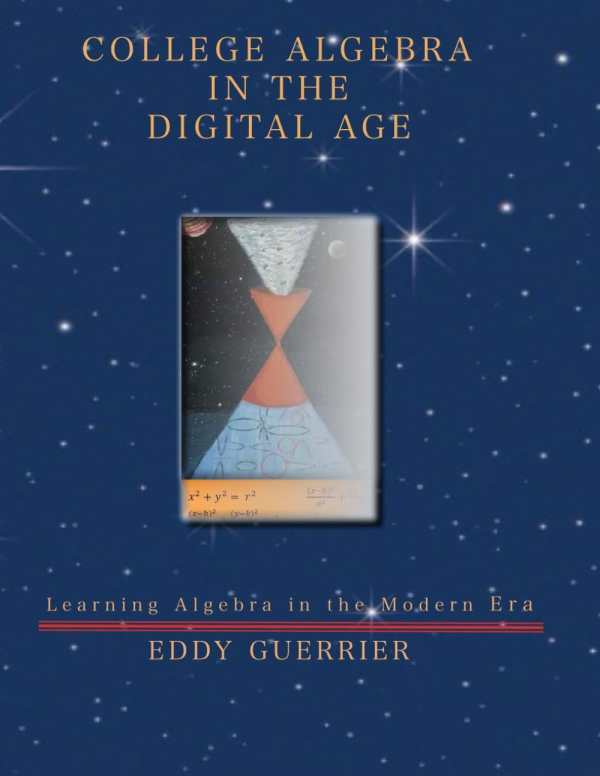
College Algebra in the Digital Age
Learning Algebra in the Modern Era
A surprising textbook, College Algebra in the Digital Age emphasizes the applicability of algebra to modern life and technology.
Eddy Guerrier’s thoughtful mathematics textbook College Algebra in the Digital Age incorporates historical insights, philosophical musings, and modern digital perspectives into its model of algebraic instruction.
To introduce classical algebraic concepts, the book begins with a brief history of algebra and the evolution of numbers. It notes that early societies counted and created numerical systems based on their practical needs, as in relation to tracking livestock and warriors. They began using numbers in more abstract ways later, leading up to traditional symbols being adapted within modern computing. Indeed, the book suggests that the evolution of algebra mirrors the advancement of technology.
After telling this story of math’s origins, the book works from simple to advanced concepts, including multivariable equations and matrices, building upon its established foundations well. Detailed instructions on the processes of analyzing and solving the problems appear throughout, as do notes on the equations’ potential applications in modern computing. At the book’s end, for easy reference, there are detailed breakdowns of the solutions and discussions of possible alternative solutions. Periodic reminders to pursue outside references to understand the material fully undermine its flow, though.
Still, the book makes strong, complementary use of visual aids, historical information, and traditional pedagogical instruction to examine the mechanics of algebra and its cultural impacts. Original poems and artwork adorn some chapters, often combined with historical quotes or snippets of poetry relating to the material. “When the slope becomes bumpy, a small climb reduces turbulence and agitation” starts the chapter on polynomials and graphs with a pun and a colorful painting of an eagle soaring above a steep hill.
The language is clear and accessible, with concepts including bijection, the decimal system, and the evolution of numerical sets well defined with the assistance of visual aids. Pictograms and symbols are present to further illustrate abstract ideas, as with postulates and complicated problem-solving techniques. Misspelled words and switches between French and English undermine the intellectual rigor of the book, however. Further, the book’s glossary of terms is not comprehensive, and its use of faint colors on white pages and of a wide-spaced, flowery font, in particular for chapter headers, makes some of its work difficult to read.
College Algebra in the Digital Age is an innovative textbook that layers historical and cultural context into its clear instructions on an ancient branch of mathematics.
Reviewed by
John M. Murray
Disclosure: This article is not an endorsement, but a review. The publisher of this book provided free copies of the book and paid a small fee to have their book reviewed by a professional reviewer. Foreword Reviews and Clarion Reviews make no guarantee that the publisher will receive a positive review. Foreword Magazine, Inc. is disclosing this in accordance with the Federal Trade Commission’s 16 CFR, Part 255.
